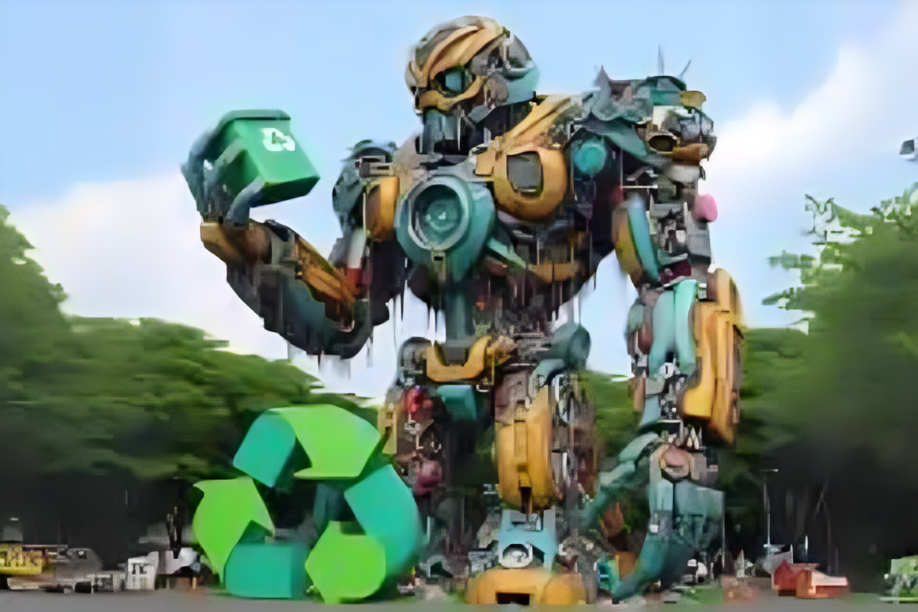Introduction
In the realms of marketing and entertainment, giant mascot robots have established themselves as captivating spectacles, enchanting audiences with their impressive designs and dynamic movements. Found at events ranging from parades to corporate gatherings, these technological marvels embody a blend of creativity and innovation. However, like all man-made creations, these mechanical giants eventually reach the end of their lifecycle. This article delves into the lifecycle of giant mascot robots, the intricate process of their decomposition, and the broader implications for the environment and technology.
The Rise of Giant Mascot Robots
Giant mascot robots represent the confluence of technology, artistry, and promotional strategy. Their journey began in the mid-20th century, coinciding with significant advancements in robotics and animatronics. Organizations quickly recognized the potential of creating mascots that were not only visually striking but also interactive. These robots engage with audiences in ways traditional mascots cannot, cementing their popularity for large-scale events and promotional efforts.
The creation process of these robots is intricate, merging engineering and design expertise. Designers craft concepts that embody the essence of a brand or event. Engineers then bring these visions to life, constructing the robot’s framework, installing motors and electronics, and programming it for specific functions. The outer structure is usually composed of lightweight yet sturdy materials like fiberglass or high-density foam, meticulously painted and adorned to reflect the desired aesthetics.
These robots are more than mere static displays; they are dynamic entertainers capable of walking, gesturing, and responding to their surroundings, thanks to advanced sensors and control systems. Their lifelike movements and engaging personas have made them staples at various events, from trade shows to theme parks.
Key Components of Giant Mascot Robots
- Frame and Structure: The core framework of the robot, typically built from strong yet lightweight materials like aluminum or fiberglass, serves as the support for the exterior and all internal mechanical systems.
- Movement Systems: This includes motors, servos, and actuators that allow the robot to move its arms, head, and other body parts. More advanced models may use hydraulic systems for smoother, more realistic movement.
- Control Systems: Acting as the robot’s control center, these systems consist of microcontrollers and specialized software that regulate the robot’s motions, lighting effects, and sound interactions.
- Power Source: Giant mascot robots are powered by batteries or alternative energy sources that fuel their mechanical and electronic operations.
- Exterior Design: The robot’s outer shell, designed to match a particular character or theme, is often made from materials like foam, fabric, or plastic. This layer is essential for the robot’s overall appearance and visual appeal.
The Challenges of Longevity and Wear
Though giant mascot robots are designed for resilience, they are not exempt from wear and tear. Over time, factors such as constant motion, environmental exposure, and mechanical stress can lead to deterioration. The materials used, while robust, may degrade; paint can fade, and the electronic systems may malfunction, resulting in jerky or unresponsive movements.
Moreover, rapid technological advancements can render these robots outdated. New materials and designs emerge, and older models may fail to meet contemporary expectations. This obsolescence, coupled with physical wear, leads to a critical decision: repair or retire.
For many organizations, the financial burden of refurbishing or upgrading a giant mascot robot can be overwhelming, often resulting in the decommissioning of these once-celebrated figures. They may then face the fate of either being stored away or dismantled.
Understanding the Decomposition Process
Decomposing a giant mascot robot involves a multi-stage process, each presenting unique challenges. Unlike organic matter, robots do not decompose in a natural manner; their breakdown is primarily a result of physical and chemical reactions, often facilitated by human intervention.
- Disassembly: The first step in decomposition is disassembling the robot. This requires careful removal of various components, such as the outer shell, mechanical parts, and electronic systems. Proper handling of hazardous materials, such as batteries and circuit boards, is crucial to prevent environmental harm.
- Material Degradation: Different materials in the robot degrade at varying rates. Metals can rust, plastics may become brittle, and composites can separate. Environmental conditions such as humidity and temperature can accelerate these degradation processes.
- Electronic Deterioration: The electronic components—sensors, processors, and wiring—are often the first to fail. Their breakdown can release harmful substances, such as lead and mercury, into the environment if not disposed of correctly. Specialized recycling methods are often necessary to recover valuable materials and minimize contamination risks.
- Environmental Consequences: The decomposition of giant mascot robots poses significant environmental challenges. Many construction materials are non-biodegradable, persisting in the environment for years. Moreover, toxic chemicals from degraded electronic parts can contaminate soil and water, posing threats to ecosystems and human health.
- Recycling and Repurposing: To mitigate these environmental impacts, there are often initiatives to recycle or repurpose robot components. Metals can be reclaimed for reuse, plastics can be reprocessed, and electronic parts may be salvaged for valuable materials. Some aesthetic elements of the robots might even be creatively transformed into art projects or other uses.
Cultural and Technological Legacy
The decomposition of a giant mascot robot signifies not only an end but also a reflection on the rapid evolution of technology. Once cutting-edge representations of innovation, these robots ultimately give way to newer, more advanced iterations. However, their cultural impact is lasting.
Giant mascot robots have become embedded in popular culture, featuring in movies, television shows, and video games, serving as enduring symbols of the imaginative future envisioned by past generations. Their decline offers valuable insights into sustainability and environmental responsibility. As technology progresses, there is an increasing recognition of the necessity to design products with their entire lifecycle in mind—ranging from production to disposal. This includes utilizing materials that facilitate recycling, minimizing hazardous substances, and finding innovative solutions to extend the lifespan of electronic devices.
The Environmental Consequences of Giant Mascot Robot Decompose
The environmental repercussions of decomposing giant mascot robots are becoming increasingly concerning, especially as more businesses and organizations employ these machines for marketing and events. The materials utilized in their construction, particularly plastics and electronic components, are not biodegradable, resulting in enduring environmental harm.
Plastic Pollution: The plastics incorporated into these robots fail to break down naturally. Instead, they disintegrate into tiny fragments, referred to as microplastics, which can accumulate in oceans, rivers, and soils. These microplastics pose a significant risk to marine ecosystems, wildlife, and even humans, as they can be ingested by animals and subsequently enter the food chain.
Electronic Waste: The electronic systems within mascot robots also create substantial environmental risks. When disposed of improperly, these components can release toxic substances into the environment, polluting soil and groundwater. This contamination not only disrupts local ecosystems but also poses health threats to surrounding communities.
Carbon Footprint: The creation and disposal of giant mascot robots contribute to their overall carbon footprint. The processes involved in extracting raw materials, manufacturing, and transporting these robots to events all generate greenhouse gas emissions. When these robots are discarded without proper recycling, the environmental impact is further exacerbated.
Conclusion
The decomposition of giant mascot robots poignantly illustrates the transience of even the most innovative technologies. Once celebrated as feats of engineering and creativity, they ultimately succumb to the passage of time and the forces of nature. Nevertheless, their legacy endures—through the memories of their audiences and the lessons gleaned from their lifecycle.
As we continue to innovate in technology and design, the story of giant mascot robots serves as a critical reminder of the importance of sustainable practices and responsible disposal. By understanding the complexities of decomposition, we can strive to ensure that the next generation of robotic innovations leaves behind a positive and enduring legacy for the future.
Keep up-to-date with breaking news and updates on Gossipsblog.com

Leave a Reply